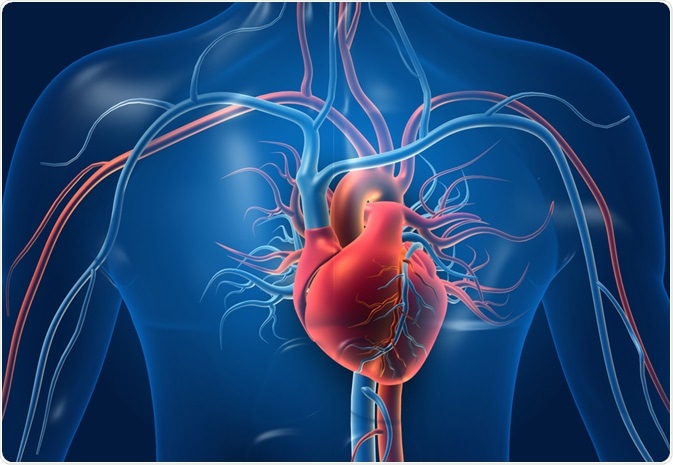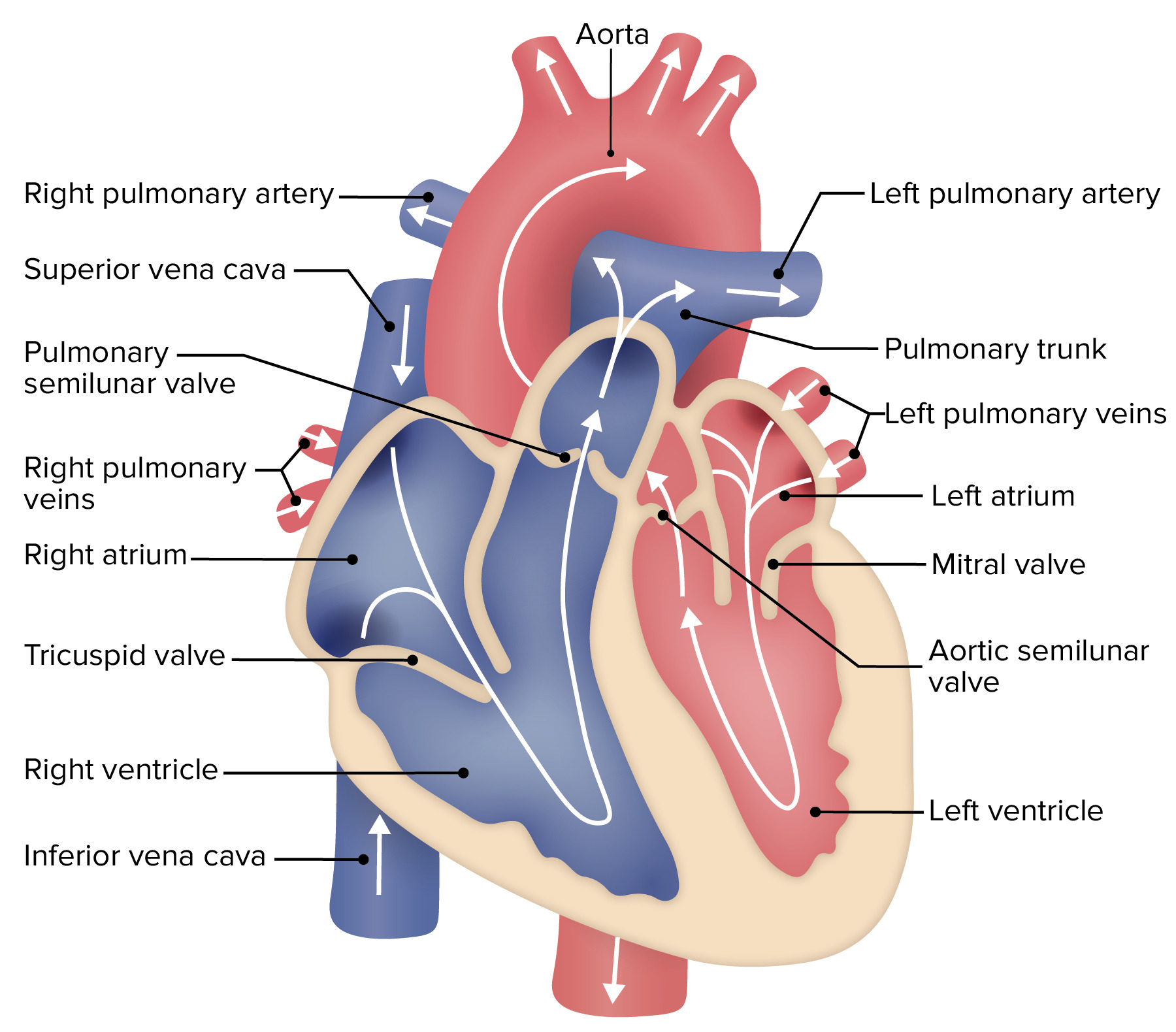During the time that the SA Node has the electricity the Atria in the heart contract. The visceral layer of the serous membrane forms the epicardium.

Structure And Function Of The Heart
The main components of the human cardiovascular system include the heart blood and various blood vessels.

. This system delivers oxygen and nutrients to your body and picks up waste products to be eliminated. Layers of the Heart Wall. This delivers oxygen- and nutrient-rich blood to tissues and organs and carries away.
Describe the general structure function and location of the heart. The heart is the vital organ of the human body. Arteries transport blood away from the heart and branch into smaller vessels forming arterioles.
It sends electricity currents to the AV Node in the heart. This valve prevents backflow of the blood into the atrium above when the ventricle contracts. The heart is the hardest working muscle in the human body.
The heart is a hollow cone-shaped muscular pump located in the thorax. These layers are surrounded by the pericardium a thin outer lining protecting your heart. Blood pumped by the heart flows through a series of vessels known as arteries arterioles capillaries venules and veins before returning to the heart.
The heart is composed of smooth muscle. It is about the size of a clenched fist weighs about 105 ounces and is shaped like a cone. The human circulatory system is responsible for the transport of materials inside the human body.
The cardiovascular system or circulatory system is a system that moves nutrients gases and wastes between cells helps fight diseases and transports blood throughout the body Circulatory System. Your cardiovascular system consists of your heart blood vessels and blood which function together as a liquid transport network. The heart is a hollow cone-shaped muscular pump located in the thorax.
The hearts main function is to pump blood to the circulation. It is protected by rib cage. The right ventricle is the major pumping chamber on the lower right side of the heart that ejects.
It is located in the middle cavity of the chest between the lungs. Arteries transport blood away from the heart and branch into smaller vessels forming arterioles. The functions of each part are as follows.
Along with the circulatory system the heart works to supply blood and oxygen to all parts of the body. The human heart is a four-chambered muscular organ shaped and sized roughly like a mans closed fist with two-thirds of the mass to the left of midline. The human heart is pinkish about the size of a fist and weighs approx.
From the different organs and tissues deoxygenated blood returns to the heart through the veins which drain into the venae cavae and into right atrium. The organs of the circulatory system are the. Thats about 115000 times in one day or about 42 million times in a year.
It functions to pump deoxygenated blood to the lungs and pump oxygenated blood to the body. Your heart is made up of three layers of tissue. MacIver Andersons colleague recently proposed a report to put an end to unique myocardial band approach because its presence cannot be defined by two.
The heart is an organ that pumps blood throughout the body. The average adult heart is about nine centimeters long and seven centimeters wide. 300 gms the weight in females being about 25 lesser than the males.
The heart consists of four chambers right and left atria above right and left ventricles. The left ventricle is the major pumping chamber on the lower left side of the heart that ejects blood into the systemic circuit via the aorta and receives blood from the left atrium. A small body of specialized muscle tissue in the wall of the right atrium of the heart that acts as a pacemaker by producing a contractile signal at regular intervals.
Heart structure and function can also be described by the Cardiac Cycle. It is located at the approximate level of the fifth or sixth rib just above the arch of the diaphragm. The heart beats at an average rate of 80 times a minute.
There are four chambers that make up the heart two on the left side and two on the right. In most people the heart is located on the left side of the chest beneath the breastbone. The two small upper chambers are the atria.
The heart is located in the chest cavity just posterior to the breastbone between the lungs and superior to the diaphragm. Arterioles distribute blood to capillary beds the sites of exchange with the body tissues. It functions to pump deoxygenated blood to the lungs and pump oxygenated blood to the body.
Blood pumped by the heart flows through a series of vessels known as arteries arterioles capillaries venules and veins before returning to the heart. Known as the P Wave on an EKG. Ad Find out the structure and anatomy of the human heart right now.
The base of the heart. This is accomplished by a series of contractions systole and. Two large veins deliver oxygen-poor blood to your right atrium.
Your heart is divided into four chambers. The heart plays a major role in our body. Arterioles distribute blood to capillary beds the sites of exchange with the body tissues.
The heart beats around 100000 times a day pumping approximately 8 pints of blood throughout the body 247. You have two chambers on the top atrium plural atria and two on the bottom ventricles one on each side of the heart. The heart is a muscular organ that pumps blood throughout the body.
The heart is a large muscular pump and is divided into two halves - the right-hand side and the left-hand side. It has four chambers which contract in a specific order allowing the human heart to pump blood. The right atrium links to the right ventricle by the tricuspid valve.
The heart is enclosed in a pericardial sac that is lined with the parietal layers of a serous membrane. The apex of the heart. The heart is an extraordinary organ.
It is located in the middle of the chest and slightly towards the left. The heart is responsible for major functions and transportation in our body. It also distributes important proteins hormones and other chemicals to different parts of your body and helps.
The average adult heart is about nine centimeters long and seven centimeters wide. The location of the heart in relation to the diaphragm. One of the primary pumping chambers of the heart located in the lower portion of the heart.
The broad end of the heart is called the base and gives rise to the major blood vessels. It is a hollow highly muscular cone-shaped structure located in the thoracic cavity above the diaphragm in between the two lungs. The heart is located almost in the center of the chest.
The adult human heart is about the size of a fist. The only basic element needed to uncover the mechanical reasons for the living heart motions is a valid structurefunction relationship comprehension. There are several different circuits contained in the cardiovascular system.

Unit 4 Pbs Heart Heart Structure Human Body Anatomy Body Anatomy

Heart Anatomy Concise Medical Knowledge


0 Comments